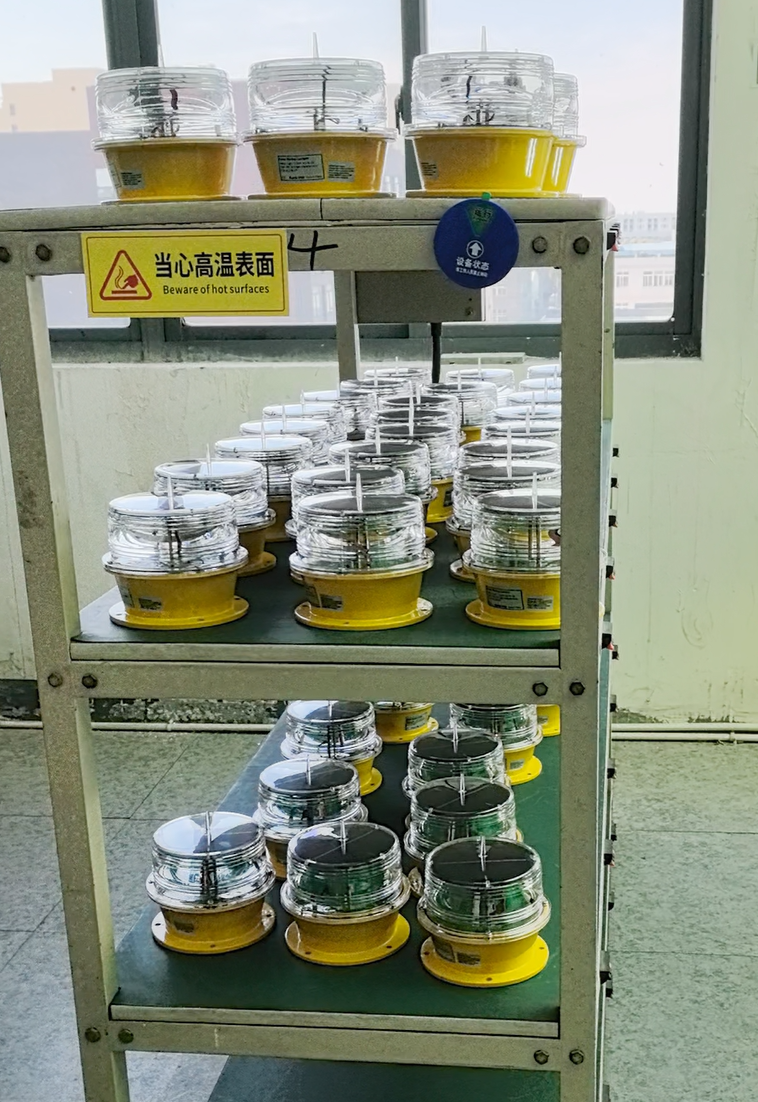
In the realm of aviation safety, one often overlooked yet crucial element is the solar aircraft warning light. These unassuming devices play a vital role in ensuring the smooth and secure operation of air travel.
Solar aircraft warning lights are a remarkable fusion of innovation and necessity. As the name suggests, they harness the power of the sun to provide a reliable source of illumination for aircraft to see and avoid potential hazards. This not only reduces the reliance on traditional power sources but also contributes to a more sustainable future for the aviation industry.
The technology behind these lights is both sophisticated and efficient. Solar panels on the warning lights absorb sunlight during the day and convert it into electrical energy, which is then stored in batteries. At night or in low-light conditions, this stored energy powers the bright lights, making them visible from a significant distance. The lights are designed to emit a specific wavelength and intensity of light that is easily detectable by aircraft pilots, even in adverse weather conditions.

One of the key advantages of solar aircraft warning lights is their durability. Built to withstand the harsh elements of the outdoors, these lights are designed to be weather-resistant, shockproof, and vandal-proof. They can endure extreme temperatures, high winds, heavy rain, and even hail, ensuring that they continue to function reliably regardless of the conditions. This durability makes them a cost-effective solution in the long run, as they require minimal maintenance and replacement.
Moreover, solar aircraft warning lights are highly versatile and can be installed in a variety of locations. They can be mounted on tall structures such as towers, buildings, and mountains, as well as on the ground near airports and airfields. This allows for a comprehensive coverage of potential hazard areas and provides pilots with clear visibility of obstacles from different angles. The lights can also be customized to meet specific requirements, such as different colors, flashing patterns, and intensities, depending on the location and purpose of installation.
Solar Aircraft Warning Lights
WEW8
TYT6
YY6T
In addition to their practical applications, solar aircraft warning lights also have environmental benefits. By using solar power, they reduce carbon emissions and help to conserve energy. This is particularly important in today's world, where there is an increasing focus on reducing the environmental impact of human activities. Moreover, the use of renewable energy sources such as solar power can help to reduce the dependence on fossil fuels and promote a more sustainable energy future.
The importance of solar aircraft warning lights cannot be overstated. They are essential for ensuring the safety of aircraft and passengers, as well as for protecting property and the environment. In the event of a collision between an aircraft and a tall structure or obstacle, the consequences can be catastrophic. Solar aircraft warning lights serve as a crucial preventive measure, alerting pilots to potential hazards and allowing them to take appropriate action to avoid accidents.
As the aviation industry continues to grow and evolve, the demand for more advanced and reliable aircraft warning systems is also on the rise. Solar aircraft warning lights are at the forefront of this evolution, offering a sustainable and efficient solution to the challenges of aviation safety. With their advanced technology, durability, and environmental benefits, these lights are set to play an increasingly important role in the future of air travel.
In conclusion, solar aircraft warning lights are a remarkable innovation that combines technology, sustainability, and safety. They are the guardians of the skies, ensuring the smooth and secure operation of air travel. As we look towards a more sustainable future, it is essential that we continue to invest in and develop these important devices to ensure the safety and well-being of all those who take to the skies.